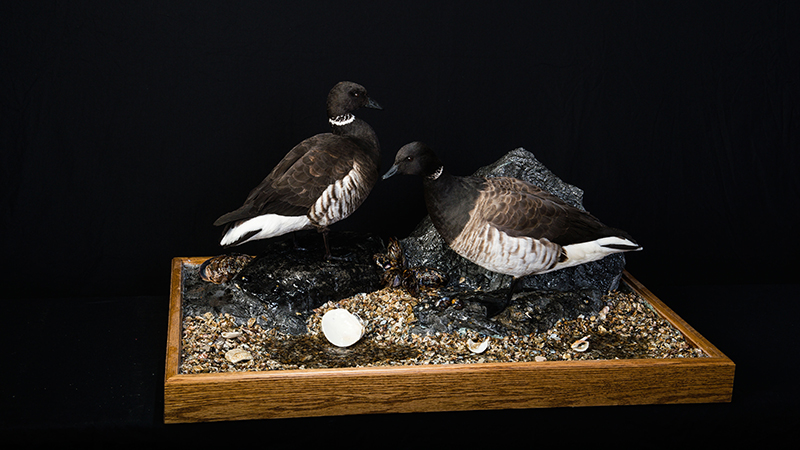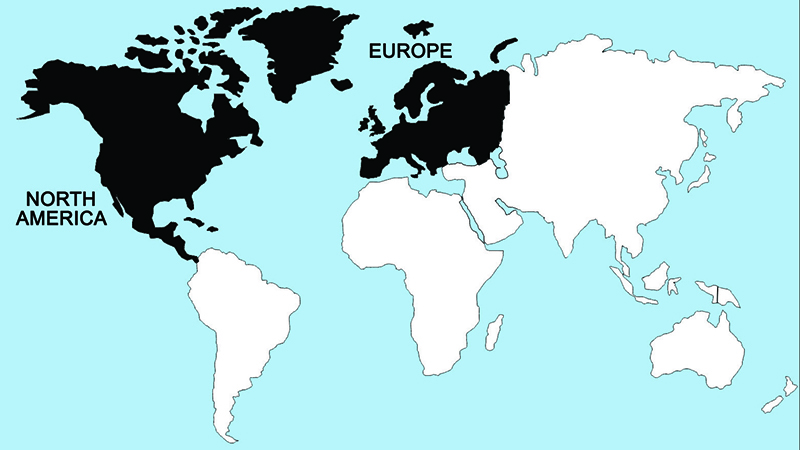Brant

Brant geese are highly social birds, and begin to form flocks shortly after the young have hatched. This results in mixed broods often tended by more than one pair of adults. Like other geese, brant arrive on their arctic nesting areas as pairs, and the birds quickly begin to seek out suitable nest sites, often on small islands or peninsulas where the danger of predation by foxes is reduced. The birds nest in a semi-colonial manner, and a substantial proportion of nests are located in sites that had been used the previous year, presumably by the same birds. Eggs are laid at the rate of one per day, and the average clutch size is usually close to four eggs. There are considerable year-to-year variations in clutch size, associated with weather at the time of nest inception. Males remain very close to their mates throughout the incubation period, although the tiny size of these birds makes them rather ineffective in preventing predation by foxes or by larger avian predators, such as glaucous gulls. Gulls and jaegers are very serious enemies of young goslings, especially during the first week or two of life. The incubation period averages 24 days, and another 45–50 days are required to bring the young birds to fledging. The young birds are led away from the nest soon after hatching, usually moving to the tidal flats where they feed on larvae and small crustaceans. At this time the adults also undergo their month-long flightless period, and frequently both adults and young attain the power of flight only shortly before the onset of freezing weather.
Regions Birds Are Found

Collection Location & Year
U.S. - Maine and Alaska 2004
Taxonomy
| Order | Anseriformes |
|---|---|
| Family | Anatidae |
| Tribe | Anserini |
| Species | Branta |
| Genus | bernicla |
Gender
Male
References
- Johnsgard, P. A. 1975b. Waterfowl of North America. Bloomington, IN: Indiana Univ. Press.
- Johnsgard, P. A. 1978. Ducks, Geese and Swans of the World. Lincoln, NE: Univ. of Nebraska Press.
- Elliot, A., J. del Hoyo, J. Sargatal, and C. Imboden, eds. 1992. Handbook of Birds of the World. Vol. 1 (Ostriches to Ducks). Barcelona, Spain: Lynx Editions.
- Kear, J. 2005. Ducks, Geese and Swans. London, UK: Oxford University Press.